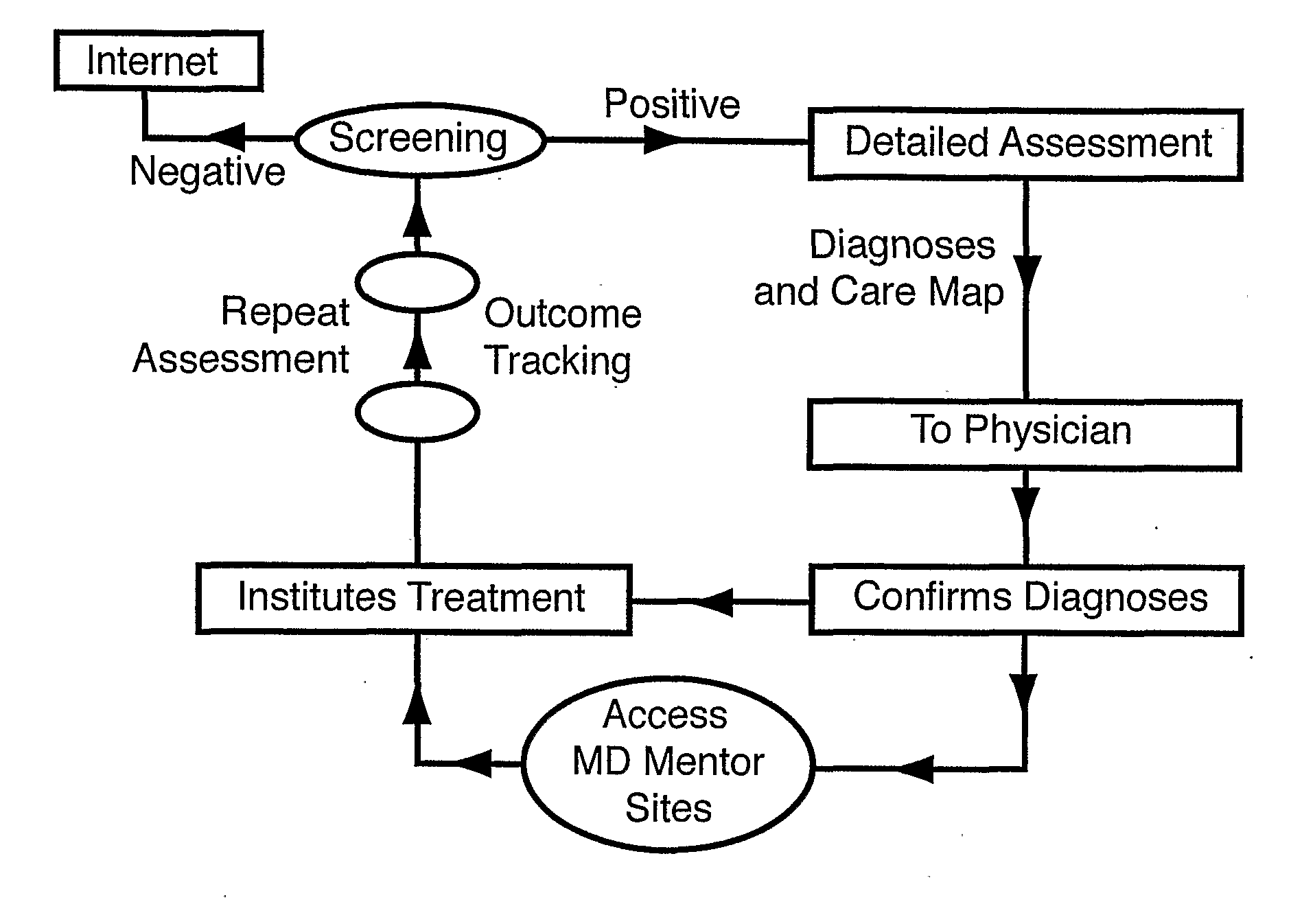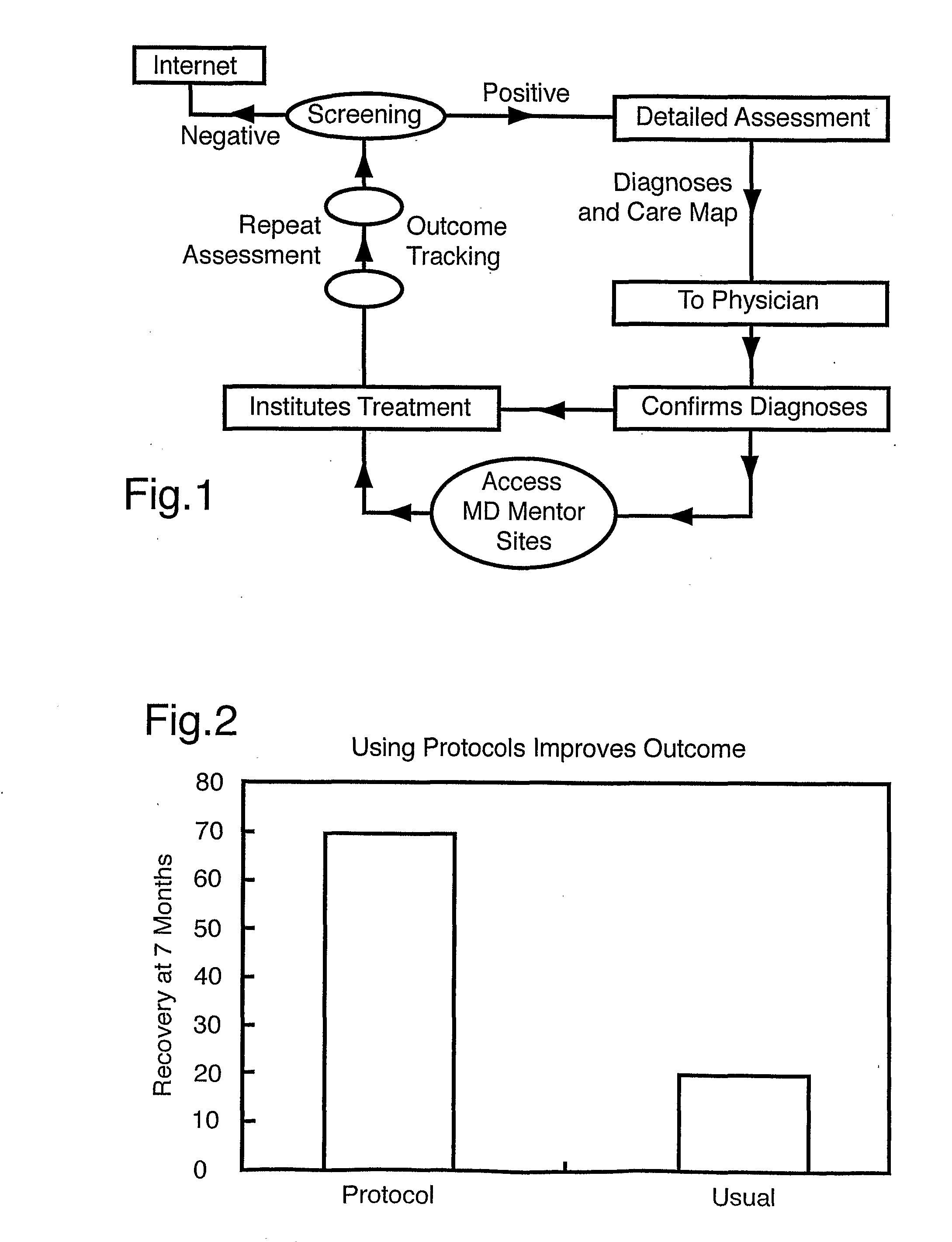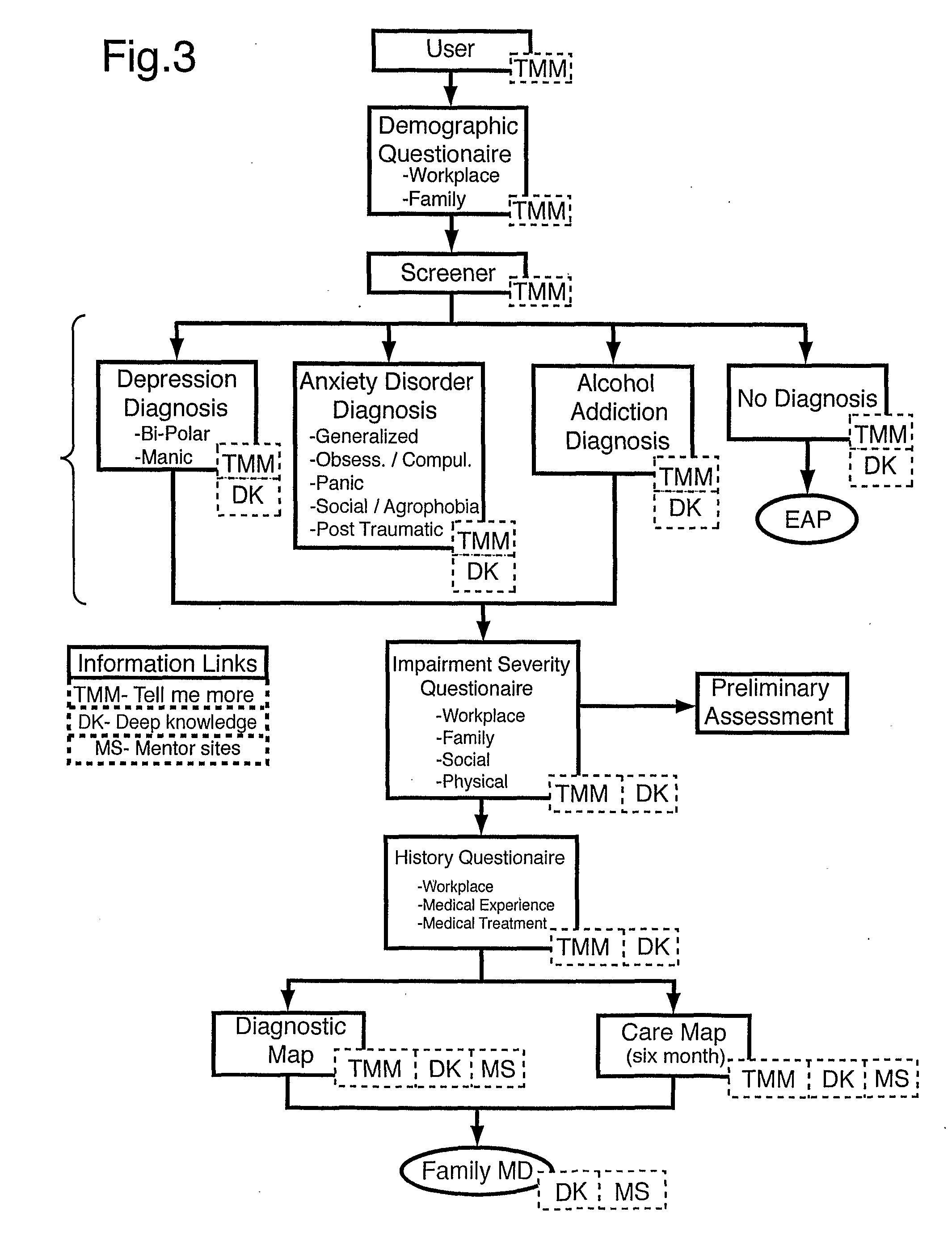If a mental health disorder is left untreated in the first six months, it often leads to long-term mental
health problems.
Early diagnosis is difficult because a patient must first realize that he or she may have a mental health disorder before he or she seeks professional diagnosis and treatment.
However, patients often confuse a mental health disorder, such as depression, with less serious conditions, such as unhappiness, stress or
burnout, and subsequently do not seek professional help.
Furthermore,
proper treatment is difficult because it first requires a correct diagnosis.
However, correct diagnosis of mental health disorders is difficult in the context of the current mental health industry.
The long
delay before an initial consultation with a psychiatrist or psychologist makes early diagnosis and treatment unlikely, and is a considerable hindrance to the
recovery time of a mental health patient.
However, family physicians do not have the specialized training of psychiatrists and psychologists, and cannot be expected to keep up-to-date with the most recent advances in therapy and
drug administration for mental health disorders.
Furthermore, whereas psychiatrists typically spend an hour per
patient visit, family physicians spend only about 15 minutes per visit.
Therefore, proper diagnosis and treatment at the “best practices” level cannot reasonably be expected to be delivered by family physicians.
Mental health disorders have had an especially negative effect in the workplace.
An Ontario study concludes that worker absenteeism from
addiction problems alone cost corporations $1.5 billion per year.
Many employees do not seek medical help even when they suspect that they have a mental health disorder because they are concerned with their reputation in the workplace and because they fear losing their jobs.
However, such programs do not adequately address the need for early diagnosis and
proper treatment of mental disorders because: (a) the employee may not realize he or she has a mental health disorder and therefore, will not telephone the
hotline; and (b) the counsellors are generally not psychiatrists and nor are they qualified to make a diagnosis.
However, previous systems for identifying mental health disorders focus on only one or two specific aspects required for the successful
recovery of a patient.
However, the Zakim
system does not teach all of the above-mentioned necessary components in order to produce a positive outcome in the management and tracking of a mental health disorder.
One of the problems associated with mental health disorders is that a patient must first realize that he or she has a mental health disorder before he or she seeks professional diagnosis and treatment.
The Zakim system fails to provide any mechanism to identify patients who are likely to have a mental health disorder in cases where the patient himself or herself does not realize he or she has a mental health disorder.
The Zakim system, therefore, fails to assist the patient in first realizing that he or she has a health problem.
Another problem specific to mental health disorders is getting a patient to go to a doctor's office in order to obtain the diagnosis, treatment and follow-up that he or she needs.
The system of Zakim fails to overcome this problem because it only begins operating when the patient arrives at the doctor's office.
Specifically, the Zakim system fails to assist the patient in recognizing that he or she has a mental health problem and fails to encourage the patient to go to a doctor's office.
This disorder often leads to social withdrawal and a reduced ability to have relationships, as well as a reduced ability to succeed in the workplace.
Another problem specifically associated with mental health disorders is that patients do not seek medical help because of the stigma attached to mental health symptoms such as sadness,
panic attacks, fears, and binge eating, and these patients fear losing respect in their personal, social and workplace environments.
Mental health disorders cause particular problems for employees in the workplace because, they are concerned with their reputation in the workplace.
The
confidentiality offered by previous systems such as Zakim is not sufficient to overcome this problem.
Confidentiality information is not completely secure from being accessed by third parties.
As a result, even if a patient knows that his or her mental
health information will be stored in a confidential
database, he or she will not consider this sufficient protection, and he or she will not seek medical assistance for fear this information will be made known to others.
A further problem associated with mental health disorders is that many patients will not consider going to their doctor unless the problem is serious and treatable, because they fear that it will cause their premiums to go up or they will be denied coverage for attending a doctor's office with a complaint related to mental health.
In the United States, one out of three individuals does not have medical insurance because they cannot afford the premiums and they do not qualify for government assistance.
The Zakim system fails to overcome this problem because, until the patient attends his or her doctor's office, there is no mechanism to make a patient aware that he or she may have a mental health problem that is both serious and treatable.
In addition, the Zakim system fails to provide an effective mechanism of follow-up to ensure compliance with the treatment.
The system of Zakim does not inform the patient as to whether his or her mental health disorder is getting better or worse.
Zakim fails to provide such information to the patient.
A typical uninformed patient will stop the treatment too soon.
Although the patient may feel as if he or she has recovered prior to six months, such patients have a
high probability for relapse and could possibly be unresponsive to the same medication.
However, the system of Bost is not specially adapted for mental health disorders.
First, Bost fails to recognize the problem associated with mental health disorders in that people must first realize that they have a mental health disorder.
Bost further fails to recognize the problem that in the workplace, employees who suspect that they might have a mental health disorder are reluctant to seek medical assistance.
Further, family physicians, who provide approximately 75% of all
mental health care, lack the proper training and time to provide a correct diagnosis of a mental health disorder.
It is known that over 50% of patients do not comply with treatment guidelines.
It is known that over 50% of patients do not comply with treatment guidelines.
 Login to View More
Login to View More  Login to View More
Login to View More 


